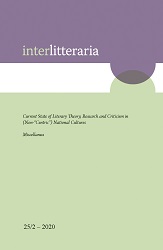Why Was It the Ming Dynasty that Engendered the Guanxi Motif in Fiction?
Why Was It the Ming Dynasty that Engendered the Guanxi Motif in Fiction?
Author(s): Ruihui HanSubject(s): Fiction, Social Philosophy, Other Language Literature, East Asian Philosophy, Theory of Literature
Published by: Tartu Ülikooli Kirjastus
Keywords: guanxi; the Ming dynasty; fiction; Confucianism; informal social network;
Summary/Abstract: Compared to other informal social network mechanisms, guanxi is more common in China and is the most typical. Even in daily life, it is indispensable. Hence, in Chinese fiction, the guanxi motif is prevalent and important. Interestingly, before the Ming dynasty, guanxi was not a literary motif in fiction. This article suggests that three factors contributed to the rise of the guanxi motif in fiction in the Ming dynasty. The first was the boom in fiction writing, especially in the genre of realism, that occurred in this era, which expanded the scope of literary representation. The second was the degradation of public morals in the Ming dynasty, a momentous social transition that Ming fiction writers noted and portrayed. Guanxi, as a disruptive social mechanism that dismantled previous models of human connection, became a focus in their works. The third was the fact that the atmosphere of money worship promoted by guanxi, together with official corruption, facilitated widespread social inequality. Guanxi, as the crux of inequity, inspired writers to expose social turpitude. More importantly, the guanxi motif satisfied the need for plot conflict in literary works. Thus, it became a necessary motif in Ming fiction.
Journal: Interlitteraria
- Issue Year: XXV/2020
- Issue No: 2
- Page Range: 443-457
- Page Count: 15
- Language: English

